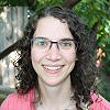 Part of our 18 days of Tesseracts, “Mom and Mother Teresa” by Candas Jane Dorsey was published in Tesseracts 9 and plays with religion in a comedic–and yet still poignant–way. I’m chatting with Candas about her story here as we each take turns talking about the story.
Part of our 18 days of Tesseracts, “Mom and Mother Teresa” by Candas Jane Dorsey was published in Tesseracts 9 and plays with religion in a comedic–and yet still poignant–way. I’m chatting with Candas about her story here as we each take turns talking about the story.
__________________
By Jerome Stueart and Candas Jane Dorsey
Jerome: I’m revisiting “Mom and Mother Teresa” in Tesseracts 9 and laughing. In the story, the narrator’s mother is often asking for more time with her daughter, specifically lifts to this place or that place, and her ear in order to complain about her life. It’s too much for the narrator. But into the mom’s house walks Mother Teresa and the story takes a left turn, as her home becomes HQ for Mother Teresa’s simple plan to do the most good with all these things the Mom already has. In Dorsey’s story, Mother Teresa helps everyone take seriously the things we all believe but in ways we don’t push ourselves to actually do. It’s like Pope Francis—actually taking seriously the Church’s stance on the poor, the needy, and ridding himself of extravagance—coming to America and telling Congress and Christians here that they need to, um, actually make the poor and the needy their priority.
Candas Jane Dorsey’s story is absurdist humour, an imaginative take on the appearance of a Real Religion, and a Real Religious Figure, in your fiction. What would you do if Mother Teresa stopped by? If she asked you what you were doing with all that ROOM in your house—a place that she can house 25 orphans, women with children, and single men, as well as a few nuns—what would you do?


 Writing is a Sacred tradition in many cultures. We revere the books that come from these cultures. It’s also a very sacrificial act, one that takes a lot of courage, honesty, and time. I’d like to talk about writing during Lent.
Writing is a Sacred tradition in many cultures. We revere the books that come from these cultures. It’s also a very sacrificial act, one that takes a lot of courage, honesty, and time. I’d like to talk about writing during Lent.
